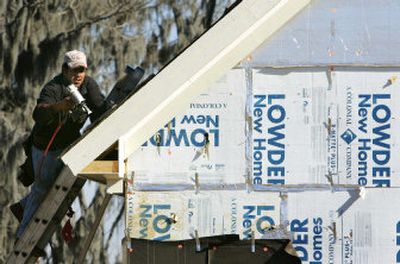Sales of new homes take a nose-dive

WASHINGTON – Sales of new homes plunged in November by the largest amount in nearly 12 years, providing the most dramatic evidence yet that the red hot housing market over the last five years is starting to cool down.
The Commerce Department reported Friday that new single-family homes were sold at a seasonally adjusted annual rate of 1.245 million units last month, a drop of 11.3 percent from October, when sales had surged to an all-time high.
Last month’s decline was even bigger than the 8.7 percent drop-off that Wall Street analysts had been expecting. While sales of both new and existing homes are still on track to set records for a fifth straight year in 2005, analysts are forecasting sales will decline in 2006 as the housing boom quiets down.
Analysts are looking for home sales to dip by around 6 percent next year under the impact of rising mortgage rates. Analysts believe that house prices, which had been soaring at double digit rates, will moderate as well.
Some of that price moderation was evidenced in the November report, which showed that the median price of a new home sold was $225,200 last month. That was up just 0.3 percent from November 2004, the weakest year-over-year price change in two years. The November median price was down 4.1 percent from the October median sales price of $234,800.
In other economic news, the Commerce Department reported that orders to U.S. factories for big-ticket manufactured goods jumped to a record $223 billion in November. That was a 4.4 percent increase from October, representing the largest percentage advance in six months. Orders for durable goods had risen 3 percent in October.
The gain in demand for durable goods was far above the 1.1 percent increase Wall Street analysts had been expecting. But the strength was concentrated in a surge in demand for commercial aircraft, which shot up 133.8 percent to $25.9 billion from $11.1 billion the previous month.
Outside of this area, manufacturing demand was weak. Excluding transportation, durable goods orders dropped by 0.6 percent, the third straight monthly decline.